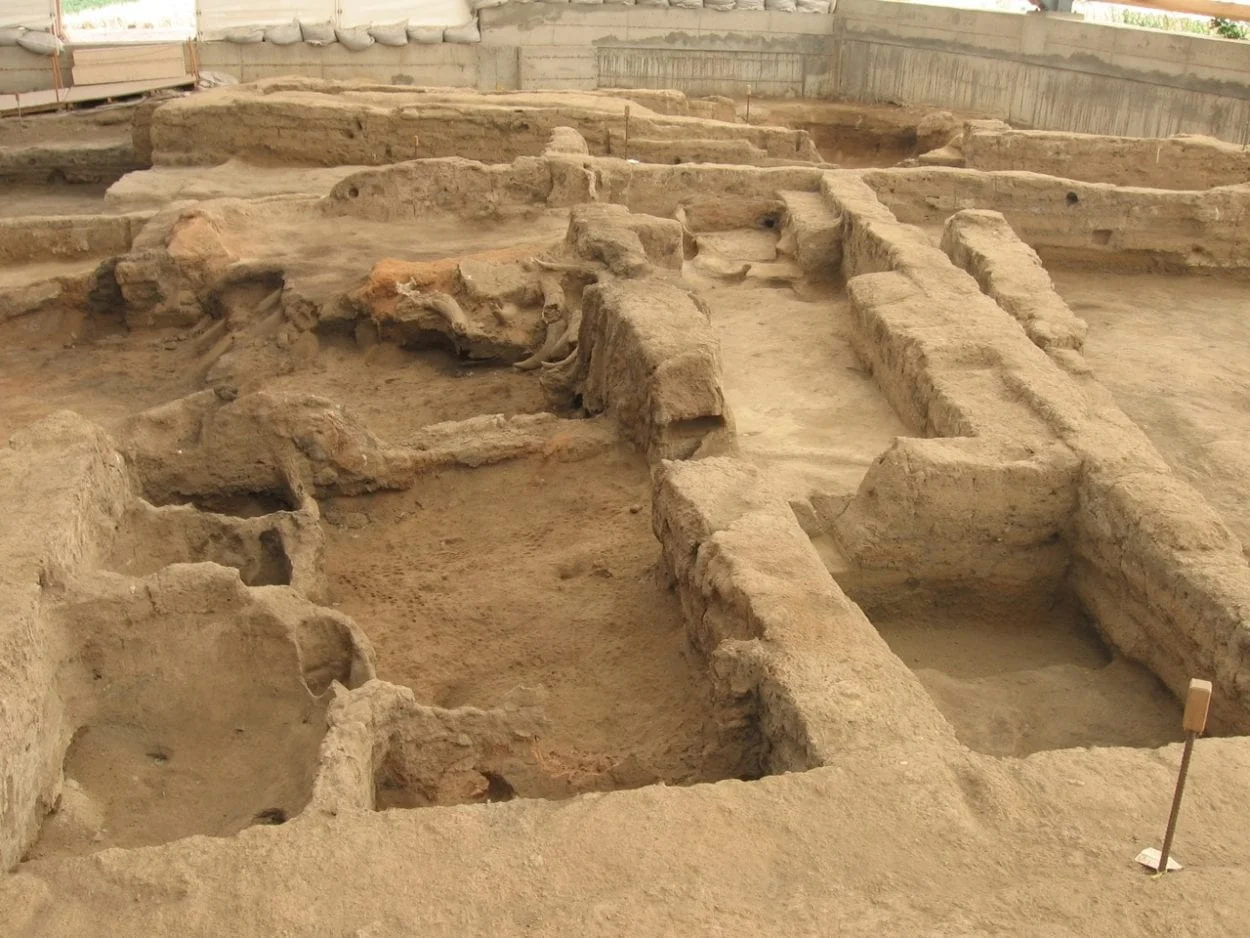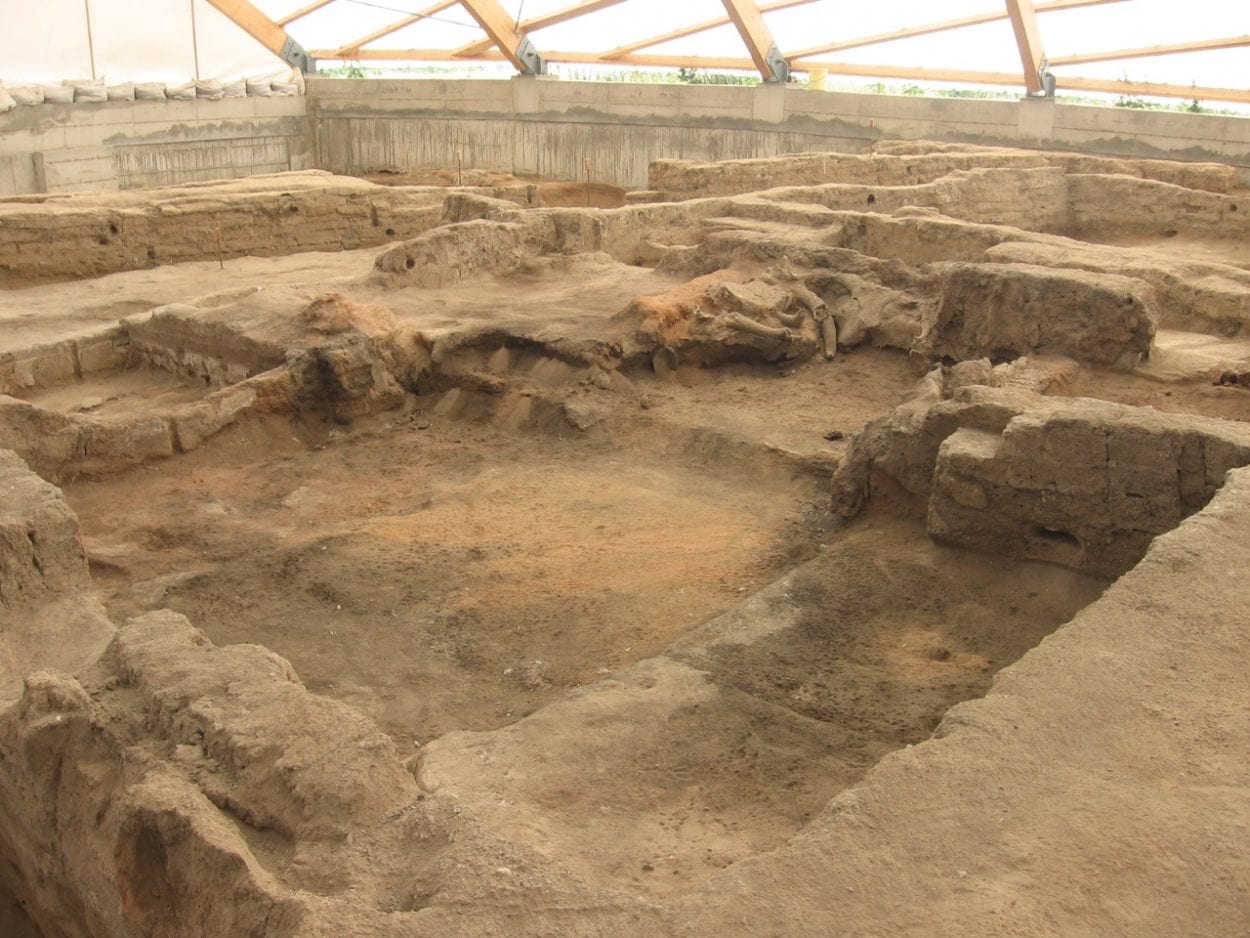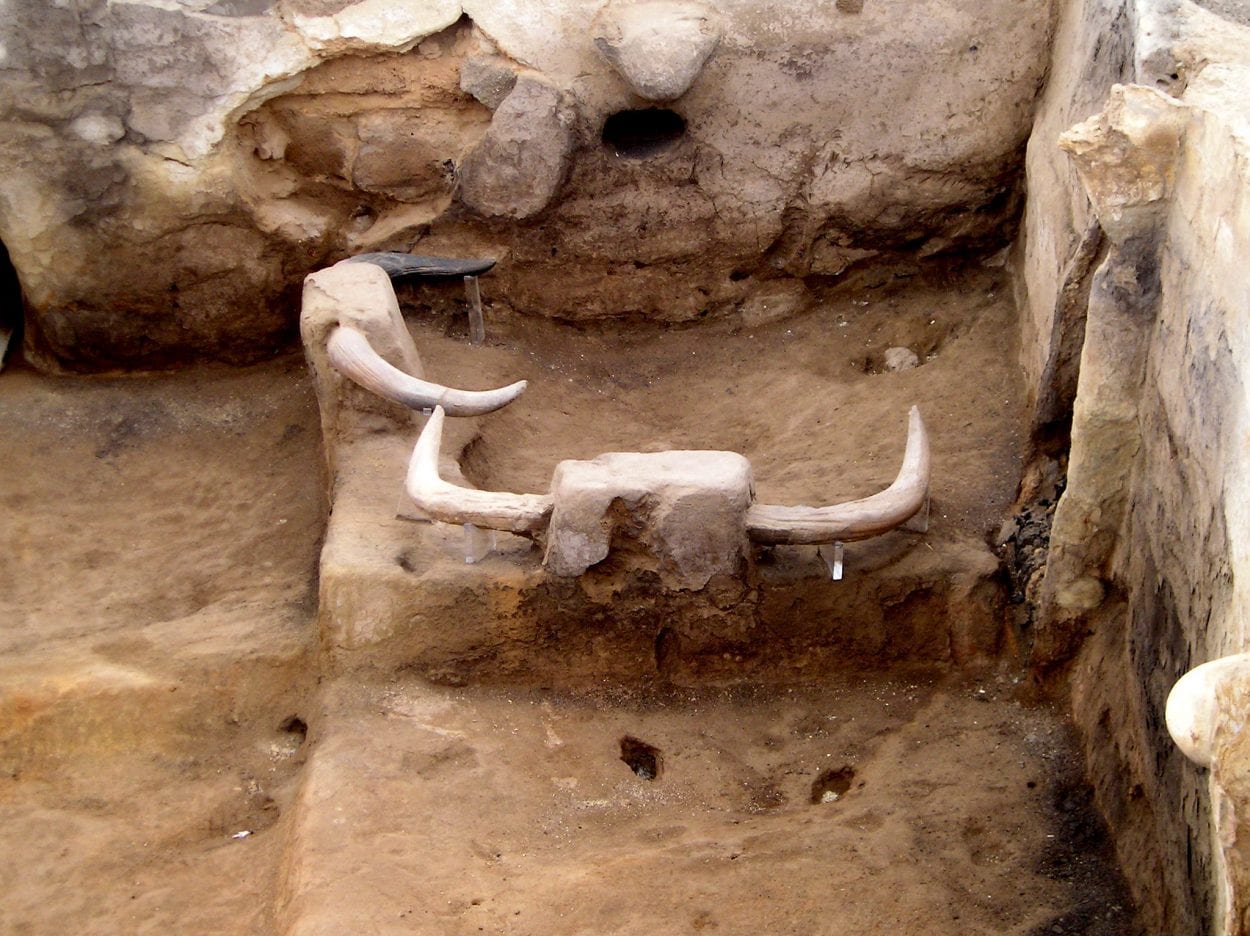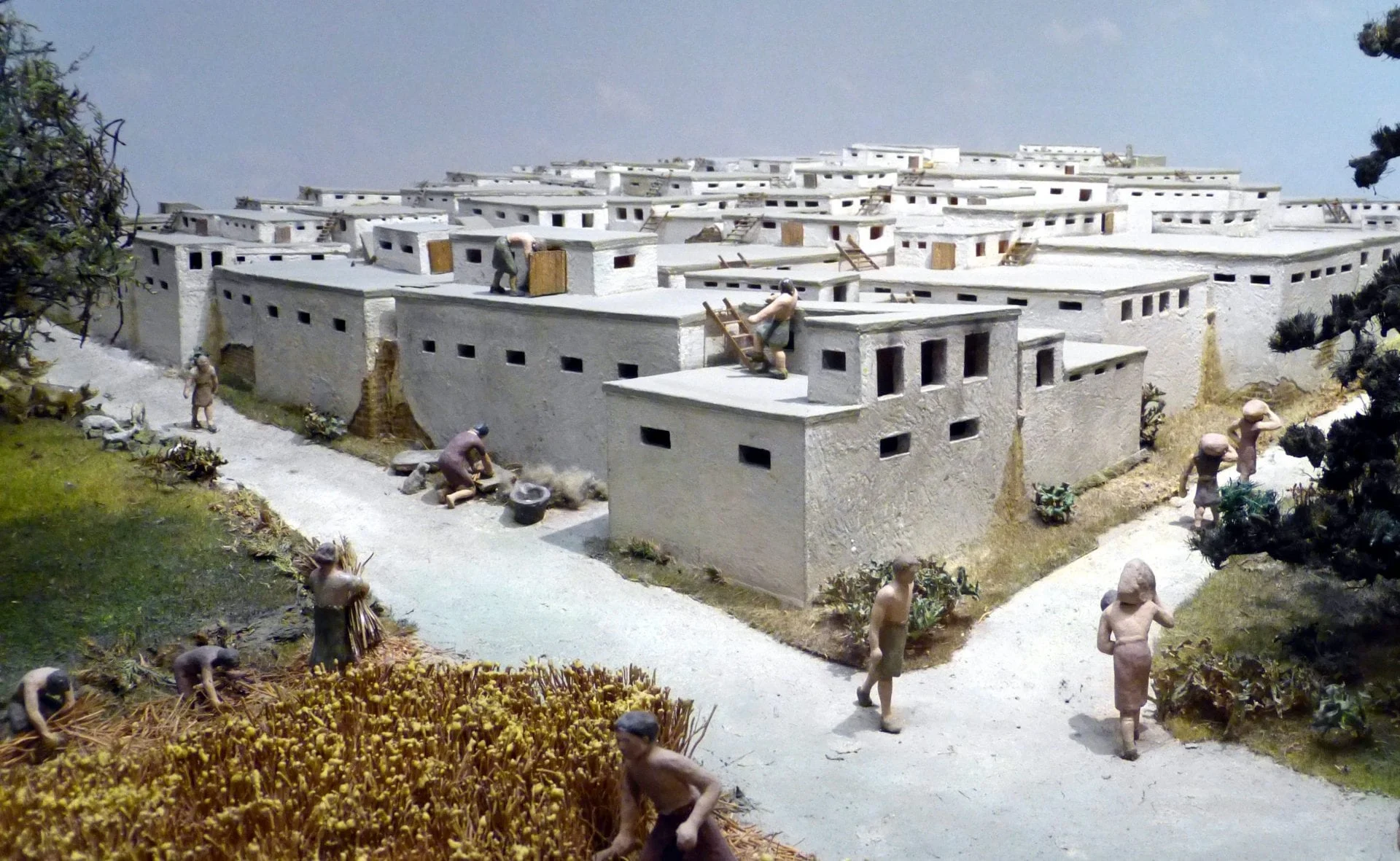Çatalhöyük is an ancient proto city from the Neolithic and Chalcolithic periods, located on the edge of the Konya Plain near the present-day city of Konya in Turkey.
The site consists of multiple urban centres (primarily Çatalhöyük East and Çatalhöyük West), with dense housing clusters situated on alluvial clay mounds that were built up during thousands of years of occupation.
The earliest phase of settlement dates from around 7100 BC during the Pre-Pottery Neolithic, a period which saw the development of pastoral complexes becoming more reliant on animal domestication alongside traditional hunting.
In the later centuries, the inhabitants at Çatalhöyük had become skilled in agriculture, with evidence of farming of cereals such as wheat and barley, ensuring plentiful food supplies throughout the year.

Çatalhöyük emerged into a large egalitarian society with a population of between 3,000- 8,000 people. The settlement was composed of mud-brick square houses planned in a cellular agglomeration that covered an area of 34 acres.
The dense clustering meant that there was no streets or alleyways between the structures, instead access to many dwellings and general movement required the inhabitants to traverse a series of ladders across the roofs to reach an entrance located at roof level.

Each house was typically occupied for 80 years, where it was then systemically disassembled and emptied of all its portable items. The mud-brick and mortar debris from the dismantled building was then crushed and used to make a consolidated foundation for a new structure, adding further layers to the alluvial clay mounds, for which archaeologists have identified eighteen levels of settlement.
Many of the Çatalhöyük’s deceased were buried below the floors and platforms inside the houses, whilst animal parts such as the skulls of bucrania, rams, goats, or cattle horns were used in the internal architecture and set into clay heads, walls, benches, and pillars.

Çatalhöyük was occupied until around 5700 BC before the emergence of the Bronze Age, with some experts attributing the abandonment to climate change, or a decline in egalitarianism leading to internal violence and a breakdown of the micro-society.
Header Image – Recreation of Çatalhöyük – Image Credit : Wolfgang Sauber – CC BY-SA 4.0





